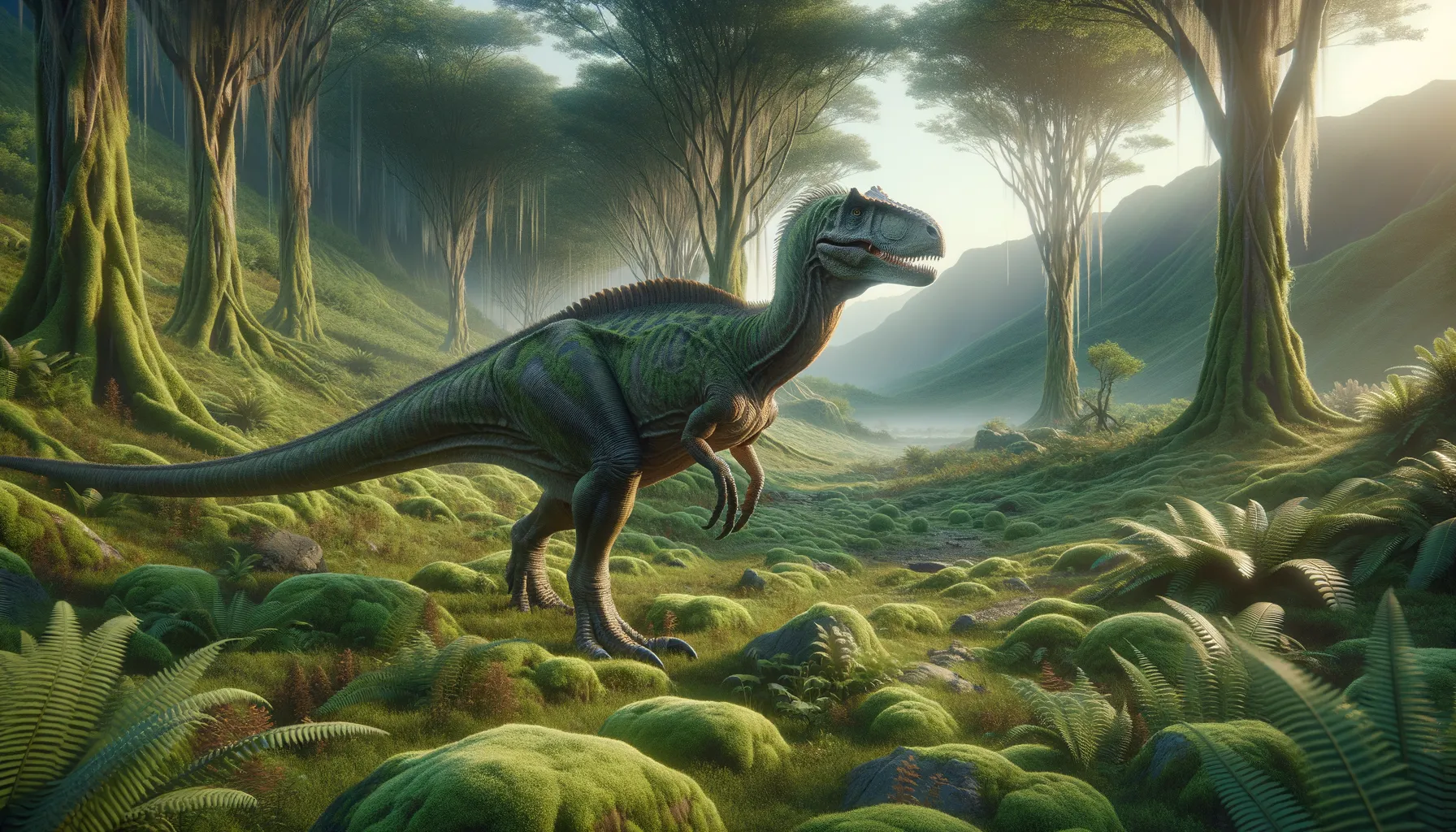
Caudocoelus
A prehistoric marvel of the Jurassic era.
Period
Jurassic
Length
Roughly 6 meters long.
Height
About 3 meters tall.
Weight
Approximately 1,000 kg.
Caudocoelus was a fascinating dinosaur known for its impressive tail and unique skeletal features. Living during the Jurassic period, it was a medium-sized creature that roamed ancient landscapes, leaving fossils that intrigue paleontologists to this day. Its diet and social behavior offer insights into the complex ecosystems of its time, making it a subject of extensive research and interest in the scientific community.
Diet
Caudocoelus was primarily herbivorous, feeding on a variety of vegetation available in its environment. Its diet included leaves, ferns, and possibly small shrubs that thrived during the Jurassic period.
Hunting
Caudocoelus likely did not engage in active hunting given its plant-based diet. Instead, it would have spent much of its day foraging and grazing for nutritious plants within its habitat.
Environmental challenges
Caudocoelus faced significant environmental challenges such as fluctuating climate conditions during the Jurassic period. These changes likely affected food availability and required adaptation to varying resources. Predation by larger carnivorous dinosaurs might have been a constant threat. Additionally, habitat changes driven by tectonic shifts could pose challenges in finding stable ecosystems.
Speed
Moderately fast for its size.
Lifespan
Estimated to be around 20 years.
First discovery
Discovered in the early 20th century.
Fun Facts
- Caudocoelus was a small, bird-like dinosaur that lived during the late Jurassic period.
- This dinosaur belonged to the group of theropods, which also includes famous predators like the Tyrannosaurus rex.
- Despite its small size, Caudocoelus had a long, flexible neck that helped it reach food in trees and bushes.
- It is believed to have been covered in feathers, similar to modern birds, which might have helped in thermoregulation.
- Caudocoelus primarily ate plants and possibly small animals such as insects.
- Its name means 'hollow tail', referring to the hollow bones in its tail, which made it lighter and possibly more agile.
- Fossils of Caudocoelus are rare and help researchers understand the evolution of feathers and flight in dinosaurs.
Growth and Development
Growth in Caudocoelus would have begun rapidly after hatching to outpace potential predators. Development likely included a distinctive change in its skeletal structure, particularly as its tail matured. Young Caudocoelus had to find food independently soon after birth. Reaching full size would have increased its chances of survival in the dynamic Jurassic environment.
Habitat
Caudocoelus inhabited lush forested regions that offered shelter and plenty of food resources. These regions consisted of mixed plant life, providing necessary nutrients for its herbivorous diet. Water sources such as rivers or lakes would have been essential for survival. Competitors in these habitats could include other herbivorous species vying for the same resources.
Interaction with other species
Caudocoelus likely shared its habitat with a variety of dinosaurs, both herbivorous and carnivorous. It may have formed herds to protect against predators. Interactions with smaller species could have included territorial disputes over food sources. Symbiotic relationships might have existed with certain plant species it helped disperse.
Natural lifespan
Caudocoelus had a natural lifespan of approximately 20 years.
Reproduction
Reproduction in Caudocoelus likely involved laying eggs in nests constructed in secure areas. Parental care might have included nest defense against predators. Hatchlings would have been relatively independent, needing to forage for food shortly after birth. Seasonal breeding cycles could have supported synchronization with environmental conditions.
Social behaviour
Caudocoelus may have exhibited complex social behaviors such as forming herds for protection. Communication could include vocalizations or visual displays within the group. Group dynamics might have played a role in dominance hierarchies or breeding access. Social structures would have helped in accessing and defending resources.
Fossil locations
Fossils of Caudocoelus have been unearthed primarily in regions known for Jurassic period deposits. Notable locations include certain areas of North America and parts of Europe. These sites have provided valuable skeletal data for reconstructing its appearance. The presence of fossils in multiple continents suggests a widespread distribution during its time.
